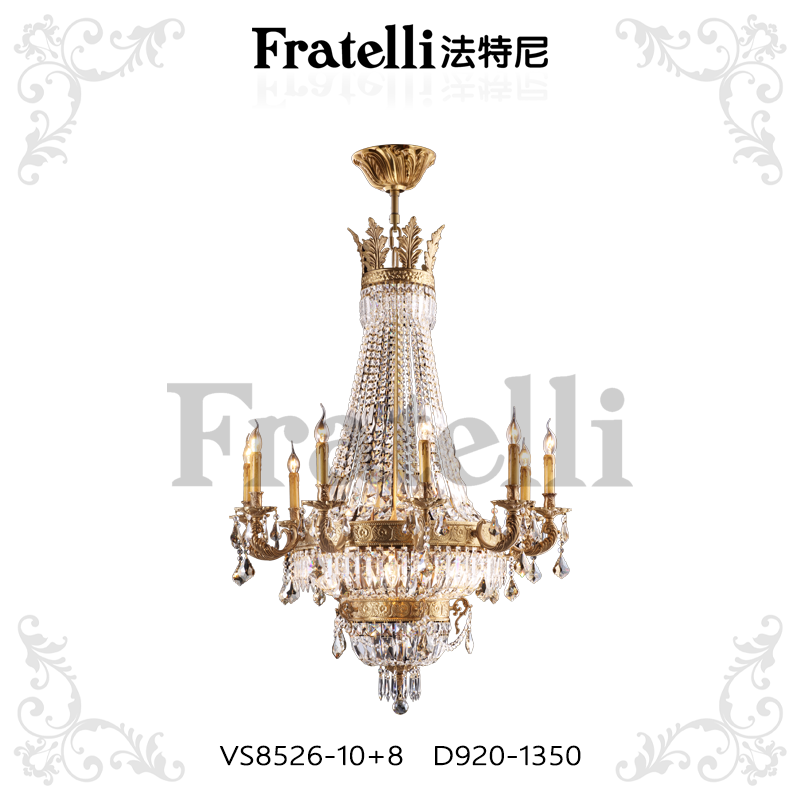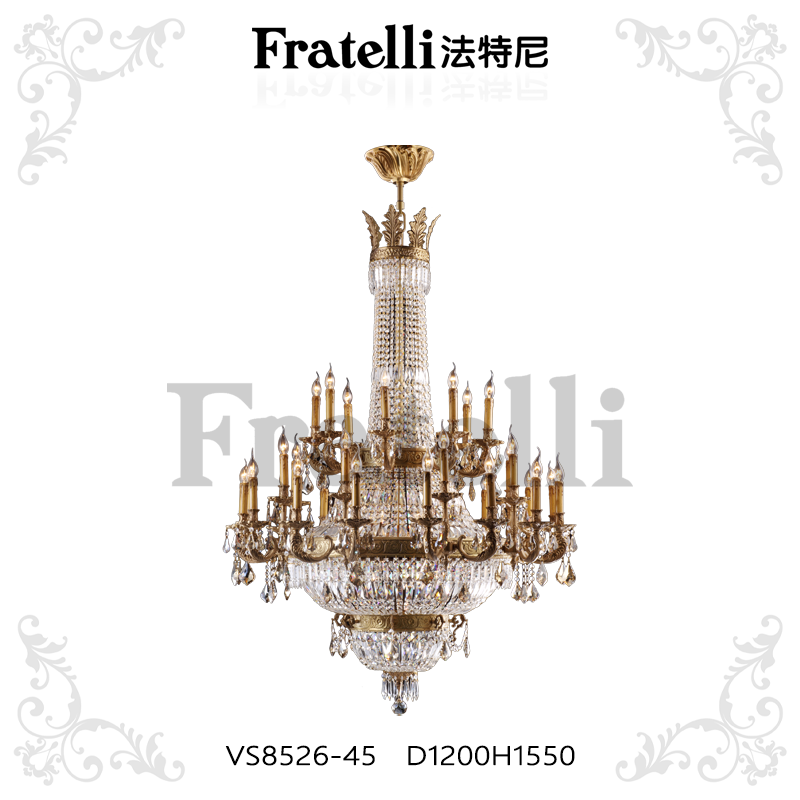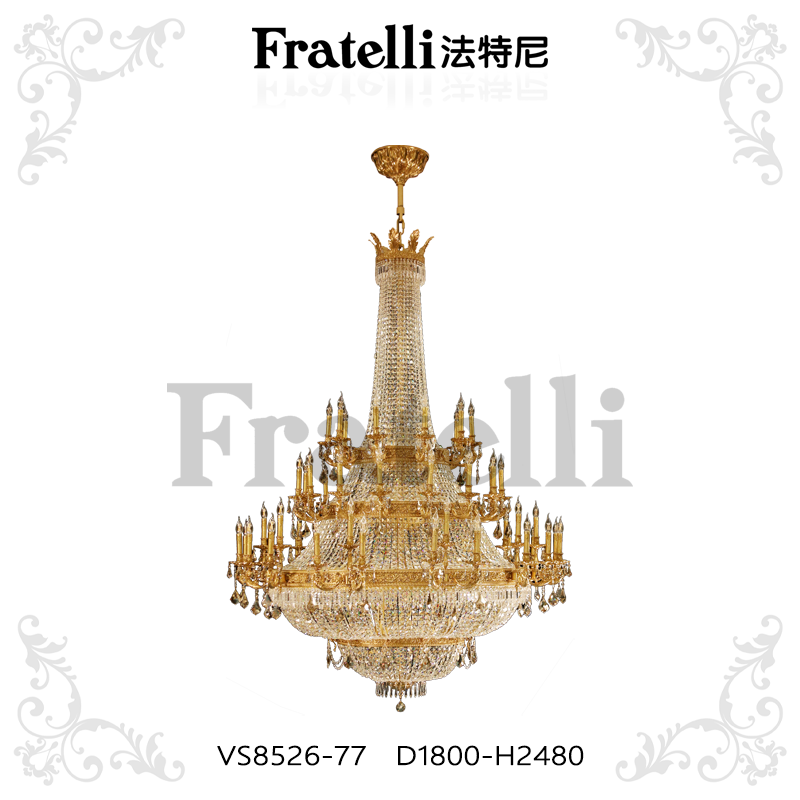Which suspension components affect the overall structural stability of a French chandelier?
Release Time : 2025-10-20
The overall structural stability of a French chandelier is closely linked to the design, material, and installation process of its hanging components. These components, through mechanical balance and material properties, guarantee the long-term safe operation of the chandelier. From a core structural perspective, the hook, chain, suspension rod, and mounting plate are key components influencing stability. Their material strength, connection method, and spatial layout directly determine the chandelier's load-bearing capacity and deformation resistance.
As the primary connection point between the French chandelier and the ceiling, the hook's material and specifications must strictly match the weight of the chandelier. High-quality hooks are typically made of high-strength alloy steel. The diameter of the round steel must be larger than the diameter of the chandelier's hanging pin and at least 6 mm to ensure long-term load resistance without breakage or deformation. For example, if a French retro all-copper chandelier is paired with an overly thin hook, the heavy weight of the copper may cause the hook to bend, potentially leading to the risk of overall tilting. Furthermore, the hook must be installed perpendicular to the chandelier's center of gravity to prevent lateral tension from causing structural shifting.
The stability of the chain depends on the strength of the links and the connection process. French chandelier chains are often suspended using galvanized or stainless steel chains. Chain links must be precisely welded or riveted to prevent individual link breakage and chain detachment. Some high-end designs utilize a double-chain structure to distribute the load and enhance safety. For example, if a vintage French flying saucer chandelier is suspended using a single chain, the links may gradually loosen due to metal fatigue from frequent opening and closing or wind vibrations. A double-chain design significantly reduces this risk.
The material and length of the suspension rod significantly impact the balance of a French chandelier. Copper or aluminum alloy rods are the mainstream choice for French chandeliers due to their corrosion resistance and moderate rigidity. The rod length must be precisely calculated based on the floor height. Too long can lead to excessive swing, while too short can cause the fixture to rest close to the floor. For example, if a French chandelier is installed in a duplex living room, an excessively long rod could cause the fixture to resonate due to movement or airflow disturbances, compromising its structural stability.
The fixing plate, as the transition between the chandelier and the ceiling, is crucial in terms of strength and mounting method. High-quality fixing plates are typically made of thickened galvanized steel and securely fastened to the concrete floor using expansion bolts or chemical anchors. If the fixing plates are undersized or poorly installed, the French chandelier could become detached from the ceiling due to vibration over time. For example, if a large French chandelier installed in a villa lobby is secured only with standard expansion screws instead of pre-buried bolts, the fixture could gradually fall due to its own weight.
The geometric layout of the hanging components also affects the stability of the French chandelier. Symmetrical hanging designs can improve deformation resistance by evenly distributing stress, while asymmetrical designs require strengthening key components to compensate for uneven loads. For example, if a French plaster chandelier features an asymmetrical carved structure, additional chains or thicker hanger rods may be needed on the side with the center of gravity offset to maintain overall balance.
Environmental factors also play a significant role in the long-term stability of hanging components. Humid environments can accelerate oxidation of metal components, leading to rust on the chains or corrosion on the hanger rods. Therefore, when using a French chandelier in coastal or high-humidity areas, it's important to select rust-proofed hanging components and regularly inspect joints for looseness.
The overall structural stability of a French chandelier is a result of the combined effects of the hanging component's materials, design, installation, and environmental factors. From the hook's load-bearing capacity to the chain's connection strength, from the boom's rigidity to the mounting plate's installation process, every step requires precise calculation and rigorous control to ensure the French chandelier maintains both elegant aesthetics and safety and stability.







